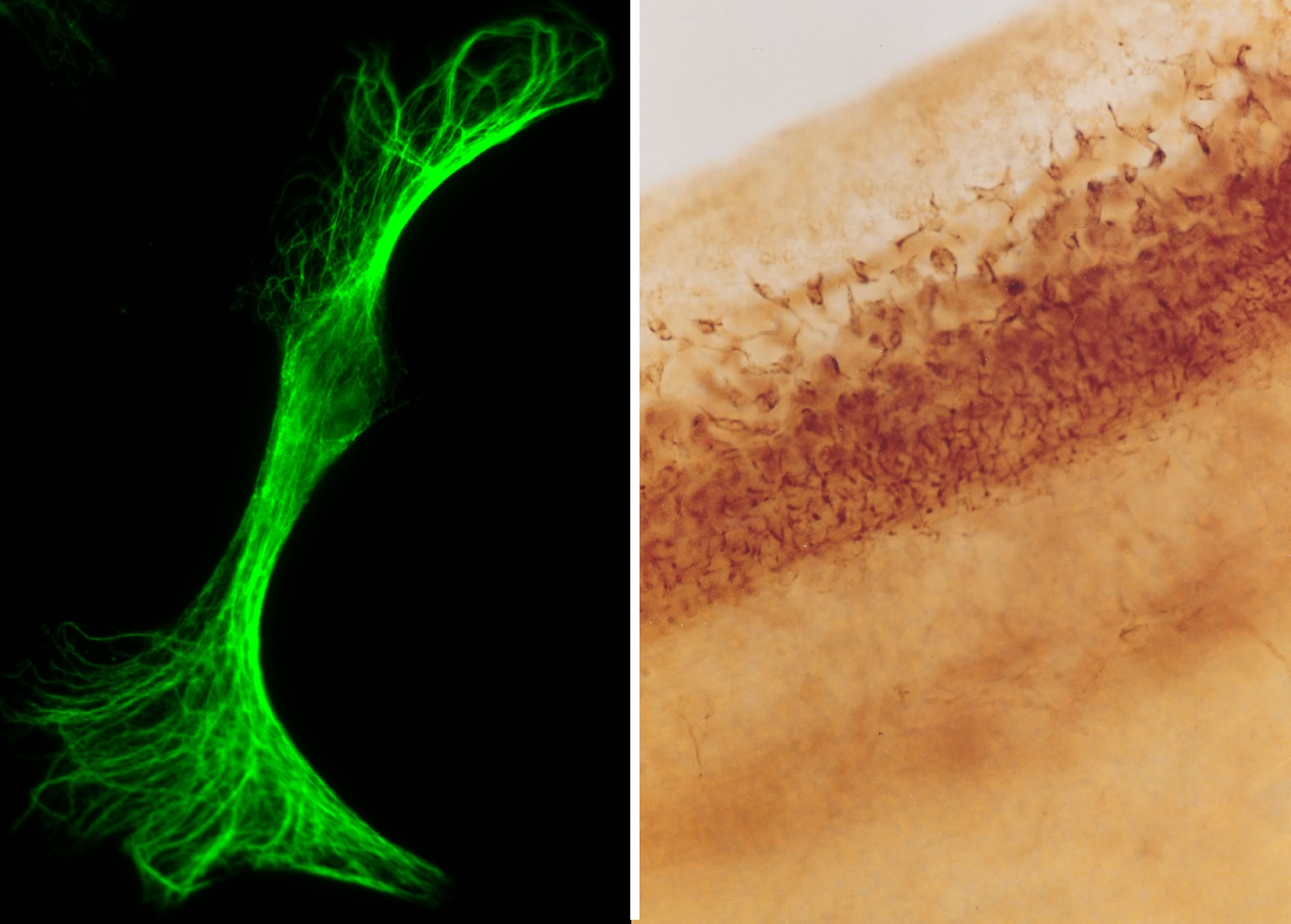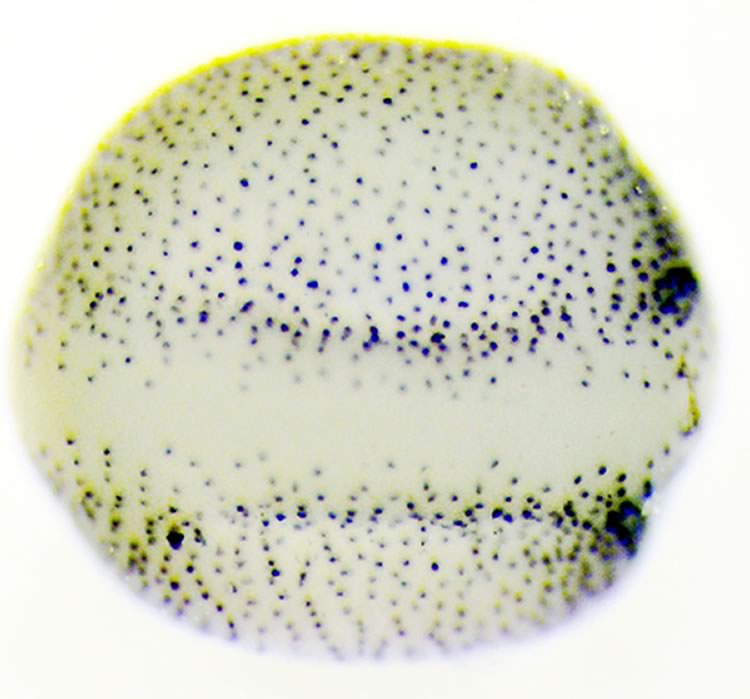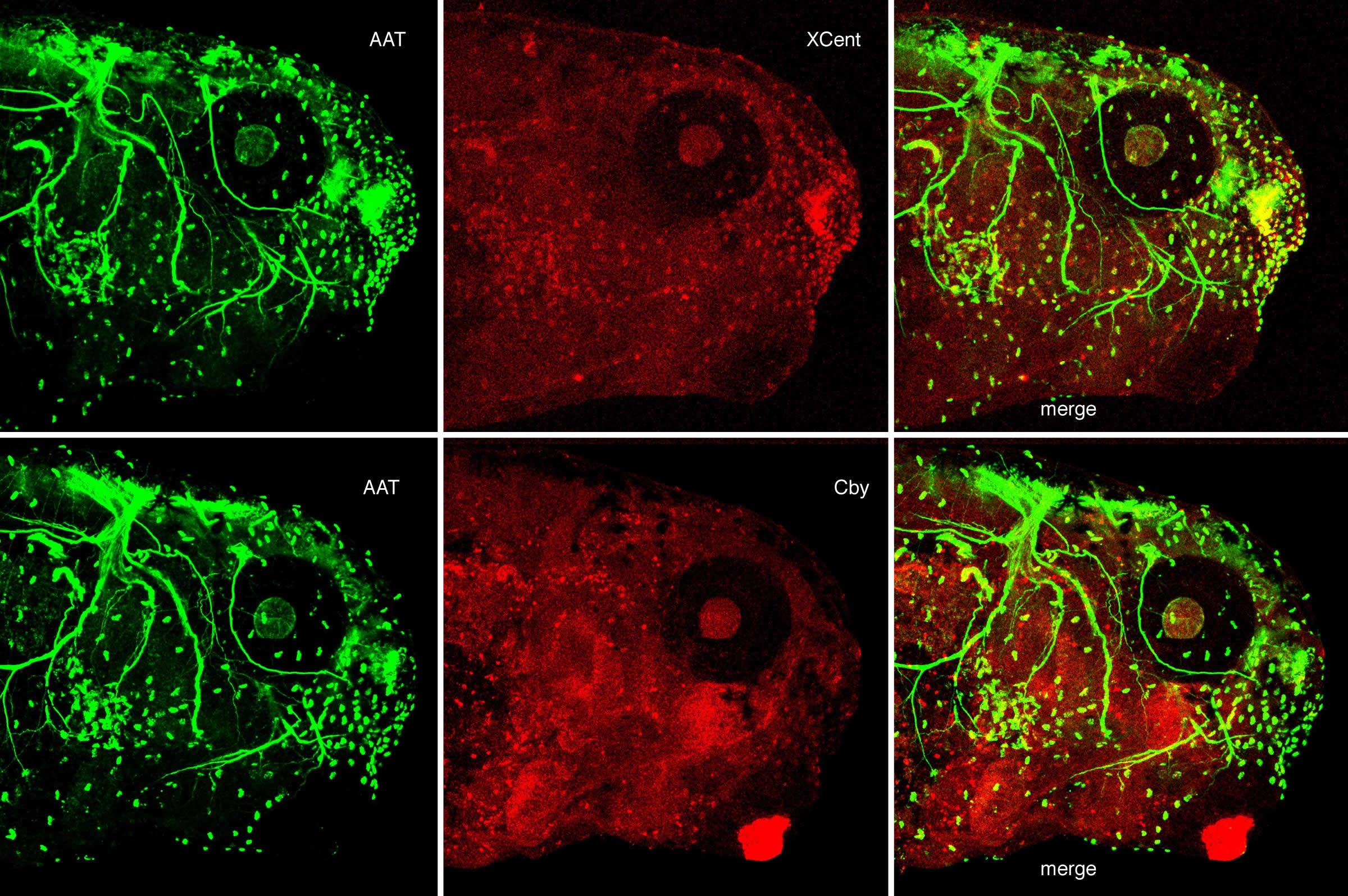| Biology & bio-education - supported over (many, many) years by |
His totally wonderful family |
WOW! |
|
| Recent publication
(2010 to the present) ORCID * Undergraduate authors & link to mad scientist answers: 138. |
 |
in the midst of pondering, thinking, experimenting & writing: |
|
|
Klymkowsky, M.W. F1000 + PLoS → bioliteracy blog |
Submitted, accepted, or published: note: only peer reviewed papers are numbered. |
127. Klymkowsky, M.W. & M.M. Cooper. Using generative AI to evaluate learning objectives and to design effective courses. 126. Hendrickson, C.L., Blitz, I.L., Hussein, I.A., Paraiso, K.D., Cho, J., Klymkowsky, M.W., Kofron & Ken W.Y. Cho. 2025. Foxi2 & Sox3 are master regulators controlling ectoderm germ layer specification, bioRxiv 125. Ray, H. & M.W. Klymkowsky, 2024. Approaching ethical issues in the developmental biology classroom. Devel. Biol., 124. Cooper, M.M. & M.W.Klymkowsky. 2024. Let’s not squander the affordances of LLMs for the sake of expedience: Using retrieval augmented generative AI chatbots to support and evaluate student reasoning. J. Chem. Edu, 123. Klymkowsky, M.W. & M.M. Cooper. 2024. The end of mulitple choice tests. arXiv. 122. Hazlett, Z. B. Xu, J. Knight, M. Klymkowsky & M.H.B. Stowell. 2024. The SkillsCenter reating scalable research opportunities for STEM students. Cell, 187:2682-2686, May 23, 2024 121. Franovic, Noyes, Williams, Klymkowsky & Cooper. (2024). How do instructors explain the mechanism by which ATP drives unfavorable processes? 120. Underwood, Kararo, Posey, Pollock, Herrington, Stowe, Carmel, Klymkowsky & Cooper (2024). The Critical Components of a Transformed General Chemistry Curriculum,2024 119. Klymkowsky. 2023. Hardy-Weinberg and genetic drift in undergraduate biology. Frontiers of Genetics, * June 2023. – Klymkowsky. 2022. Genetics in Context. (review of Haskel-Ittah and Yarden's Putting Genetics in Context. Science & Education, Sci. Educ. 32, 871–876. doi:10.1007/ s11191-022-00326-2 – Cooper & Klymkowsky 2022. Aligning assessment goals with the current and future technologies needed to achieve them. in "Technologies in Biomedical and Life Science Education: Approaches and Evidence of Efficacy for Learning" H. Witchel & Michael Lee, eds. 118. Klymkowsky, M.W. 2021. Making mechanistic sense: are we teaching students what they need to know Developmental Biology, 476, pp.308-313. – Cooper, M.M. & M.W. Klymkowsky, 2020. Curbing the malpractice of curved grades and high-stakes exams. ASBMB Today, December – Cooper & Klymkowsky, 2020. Comments: Should Organic Chemistry be Taught as a Science - J. Chem. Ed., & Unnecessary obstacles hampering equity in education. Science Advances. 117. Klymkowsky, M.W. & K. Garvin-Doxas. 2020. Concept Inventories: Design, Application, Uses, Limitations & Next Steps. Mintzes & Walter, Eds. Active learning in college science. Berlin: Springer Nature. 116. Klymkowsky, 2019. Filaments & phenotypes: cellular roles and orphan effects associated with mutations in cytoplasmic intermediate filament proteins. A F1000 review. 115. Oran, A., A. Martin, M.W. Klymkowsky & R. Stubbs. "Identifying Students' Progress and Mobility Patterns in Higher Education Through Open-Source Visualization", resubmitted. 114. Cooper, M.M., R. Stowe, O. Crandell & M.W. Klymkowsky. 2019. Organic Chemistry, Life, the Universe and Everything (OCLUE): A transformed organic chemistry curriculum. J. Chem Ed. in press. |
– Klymkowsky, M.W. 2018. Where does the river take us? Robustness versus replication in scientific research. Quartely Review of Biology, book review. – McClure-Begley, T.D., C.C. Ebmeier, K.E. Ball, Z. Poss, I. Kogut, G.C. Bilousova, M.W.Klymkowsky & W.M. Old 2018. Cerebral organoid proteomics reveals signatures of dysregulated forebrain development associated with human trisomy 21.bioRxiv 113. Klymkowsky, M.W. 2018. Whole-mount Immunocytochemical Methods in Xenopus. Xenopus Cold Spring Harbor LaboratoryProtocols, S. Moody, ed. (vimentin - cultured cell and in Xenopus →) – Klymkowsky, M.W. 2018. Constrain Speculation to Protect the Integrity of Science. What we can know about biology before the last universal common ancestor is limited—and we should be circumspect in filling in the gaps. The Scientist on-line 18 June 2018 |
 |
107. Zhao, Y., J. Shi, M. Winey & M.W. Klymkowsky. 2016. Identifying domains of EFHC1 involved in axonemal localization, ciliogenesis, and the regulation of Wnt signaling. Dev. Biol. 411: 257-65. – Cooper, M.M. & M.W. Klymkowsky. 2016. Chemistry, Life, the Universe & Everything: An Evidence-Based, Transformed General Chemistry Curriculum. AAAS/NSF Symposium on Envisioning the Future of Undergraduate STEM Education. – Klymkowsky, M.W., S.P. Bryfczynski & M.M. Cooper. 2016 Bringing useful insights into student thinking to course design, delivery, and evaluation using the beSocratic formative assessment system. AAAS/NSF Symposium on Envisioning the Future of Undergraduate STEM Education. |
 |
106. Square, T., M. Romášek, M. Cattell, D. Jandzik, M.W. Klymkowsky & D.M. Medioros. 2015. CRISPR/Cas9-mediated mutagenesis in the sea lamprey, Petromyzon marinus: a powerful tool for understanding ancestral gene functions in vertebrates. Development, 142: 4180-4187. 105. Williams, J.C., S.M. Underwood, M.W. Klymkowsky & M.M. Cooper. 2015. Are non-convalent interactions an Achilles heel in chemistry instruction and student understanding. J. Chem. Ed., 92:1979–1987. – McClure-Begley, T.D., C.E. Ebmeier, K.E. Ball, M.W. Klymkowsky, and W.M. Old. 2015. Proteome-wide effects of Down Syndrome explored with human induced pluripotent stem cell derived cerebral organoids. Society for Neuroscience abstract (press release). |
|
|
– Bryfczynski, S., Pargas, R.P., Cooper, M.M., Klymkowsky, M.W,, Hester, J., & N.P. Grove. 2015. Classroom uses for beSocratic. in The Impact of Pen and Touch Technology on Education. Hammond, T., Valentine, S., Adler, A., & Payton, M. (Eds.) Springer. 104. Shi, J., Y. Zhou, T. Vonderfecht, M. Winey & M.W. Klymkowsky. 2015. Centrin-2 mediated regulation of FGF/FGFR gene expression in Xenopus. Scientific Reports, 5:10283. doi: 10.1038/srep10283. 103. Shi, J., Y, Zhao, D. Galati, M. Winey & M.W. Klymkowsky. 2014. Chibby functions in Xenopus ciliary assembly, embryonic development, and the regulation of gene expression. Developmental Biology, 395: 287–298. – Klymkowsky. 2014. Physics for (molecular) biology students. APS forum on Eduation (because it has disappeared from the web) |
102. Redish, E.F., C. Bauer, K.L. Carleton, T.J. Cooke, M.M. Cooper, C.H. Crouch, B.W. Dreyfus, B. Geller, J. Giannini, J. Svoboda Gouvea, M.W. Klymkowsky, W. Losert, K. Moore, J. Presson, V. Sawtelle, K. V. Thompson, C. Turpen, R.K.P. Zia. 2014. NEXUS/Physics: An interdisciplinary repurposing of physics for biologists. Am. J. Phys 82: 368 101. Cooper, M.M., M.W. Klymkowsky & N.M. Becker. 2014. Energy in Chemical Systems: An integrated approach. in R.F. Chen et al. (eds.), Teaching and Learning of Energy in K-12 Education,DOI 10.1007/978-3-319-05017-1__17 Springer Verlag. –Garvin-Doxas, K., M.W. Klymkowsky, I. Doxas, & W. Kintsch. 2014. Using technology to accelerate the construction of concept inventories: Latent Semantic Analysis and the Biology Concept Inventory. 6th International Conference on Computer Supported Education, CSEDU, Barcelona. |
 |
– Redish, E., Bauer, C., Carleton, K., Cooke,T., Cooper M.M., Crouch C., Dreyfus, B., Geller, B., Giannini, J., Svoboda Gouvea, J., Klymkowsky, M.W., Losert, W., Moore, K., Presson, J., Sawtelle, V., Thompson, K., Turpen, C., 2013. NEXUS/Physics: Rethinking physics for biology and pre-med students. AAAS Vision and Change meeting poster, August 2013. 100. Repenning, A., A. Basawapatna, & M.Klymkowsky. 2013. Making educational games that work in the classroom, International Games Innovation Conference 2013. IEEE Games Innovation conference (IGIC). Bryfcyzinski, S., R.P. Pargas, M.M. Cooper, M. Klymkowsky, J. Hester, N.P. Grove. 2013. Classroom uses for beSocratic. Conference abstract. Bryfcyzinski, S., B.C. Dean, R.O. Pargas, M.M. Cooper & M.W. Klymkowsky. 2013. Teaching data structures with beSocratic. ACM abstract. http://dl.acm.org/citation.cfm?doid=2445196.2445429. |
99. Cooper, M.M. & M.W. Klymkowsky. 2013. Chemistry, Life, the Universe and Everything: a new approach to general chemisry and a model for curriculum reform, J.Chem. Educ., 90: 1116–1122 (and the cover!) 98. Cooper, M.M. & M.W. Klymkowsky. 2013. The trouble with chemical energy: why understanding bond energies requires an interdisciplinary systems approach. CBE Life Sci. Education,12:306-12. doi: 10.1187/cbe.12-10-0170. 97. Klymkowsky, M.W. & M.M. Cooper. 2012. Now for the hard part: the path to coherent curricular design. BAMBED, 40: 271-272. (PMID: 22807431) 96. Cooper, M.M, S.M. Underwood, C. Hilley & M.W Klymkowsky. 2012. Development and assessment of a molecular structure and properties learning progression. J. Chem. Educ., 89: 1351–1357. 95. Bryfcyzinski, S., R.O. Pargas, M.M. Cooper & M.W. Klymkowsky. 2012. Analyzing and visualizing student work with BeSocratic. ACM-SE '12 Proceedings of the 50th Annual Southeast Regional Conference. P: 349-350 (doi: 10.1145/2184512.2184599) |
|
94. Henson, K., M.M. Cooper, & M.W. Klymkowsky. 2012. Turning randomness into meaning at the molecular level using Muller’s morphs. Biology Open 1:405-10. (PMID: 23213431) 93. Cattell, M., A. Garnett, M.W. Klymkowsky & D.M.Medioros. 2012. A maternally established soxB1/soxF axis is a conserved feature of chordate germ layer. Evo. & Devo., 14:104-115. 92. Shi, J., H. Zheng, R.D. Dowell & M.W. Klymkowsky. 2012. sizzled function and secreted network interactions in the dorsolateral mesoderm. Biol. Open., 1: 286-294 (PMID: 23213419) 91. Trujillo, C*. M.M. Cooper & M.W. Klymkowsky. 2012. Using graph-based assessments within Socratic tutorials to reveal and refine students’ analytical thinking about molecular networks. BAMBED 40:100-107. doi: 10.1002/bmb.20585 90. Klymkowsky, M.W. 2011. Mitochondrial activity, embryogenesis, and the dialogue between the big and little brains of the cell. Mitochondrion, 11:814-819. 89. Shi, J., C. Severson, J. Yang, D. Wedlich & M.W. Klymkowsky. 2011. Snail2-specific, BMP- and Wnt- dependent mesodermal induction of neural crest. Development 138: 3135-45. – Klymkowsky, M.W. 2011c. Teaching disconcerting scientific ideas. ASBMB Today, June – Klymkowsky, M.W. 2011b. Why is understanding evolution hard? ASBMB Today, March. – Klymkowsky, M.W. 2011a. Getting serious about science education. ASBMB Today, February. 88. Shi, J., J. Power & M.W. Klymkowsky. 2011. Revealing student thinking about experimental design and control experiments. Int. J. Sci. Ed. 5:1-16. – Klymkowsky. M.W. 2011. Review of "Why evolution works (and creationism fails). by M. Young & P.K. Strode. Reports of the National Center for Science Education. – Klymkowsky, M.W., S. Underwood, & R.K. Garvin-Doxas. 2010. The Biological Concepts Instrument (BCI), a diagnostic tool to reveal student thinking. arXiv:1012.4501v1. 87. Klymkowsky, M.W., C. Cortez-Rossi, & K.B. Artinger. 2010 Mechanisms driving neural crest induction and migration in the zebrafish and Xenopus laevis. Cell Adhesion & Migration, 4: 595-608. 86. Hikasa, H.. J. Ezan, X. Li, M.W. Klymkowsky & S. Sokol. 2010. Wnt-dependent phosphorylation of TCF3 leads to transcriptional derepression during vertebrate anteroposterior axis specification. Dev. Cell, 9:521-32. 85. Klymkowsky, M.W. 2010. Thinking about the conceptual foundations of the biological sciences. CBE Life Science Educ. 9: 405-7. 84. Cooper, M.M., N. Grove, S. Underwood & M.W. Klymkowsky. 2010 Lost in Lewis Structures: an investigation of student difficulties in developing representational competence. J. Chem Ed.,DOI: 10.1021/ed900004y. |